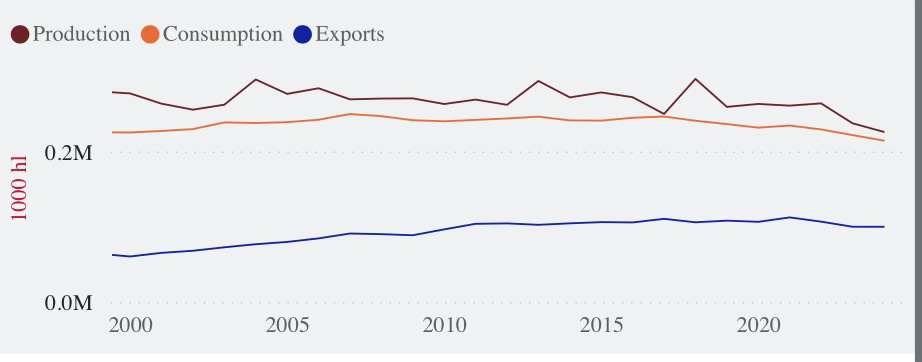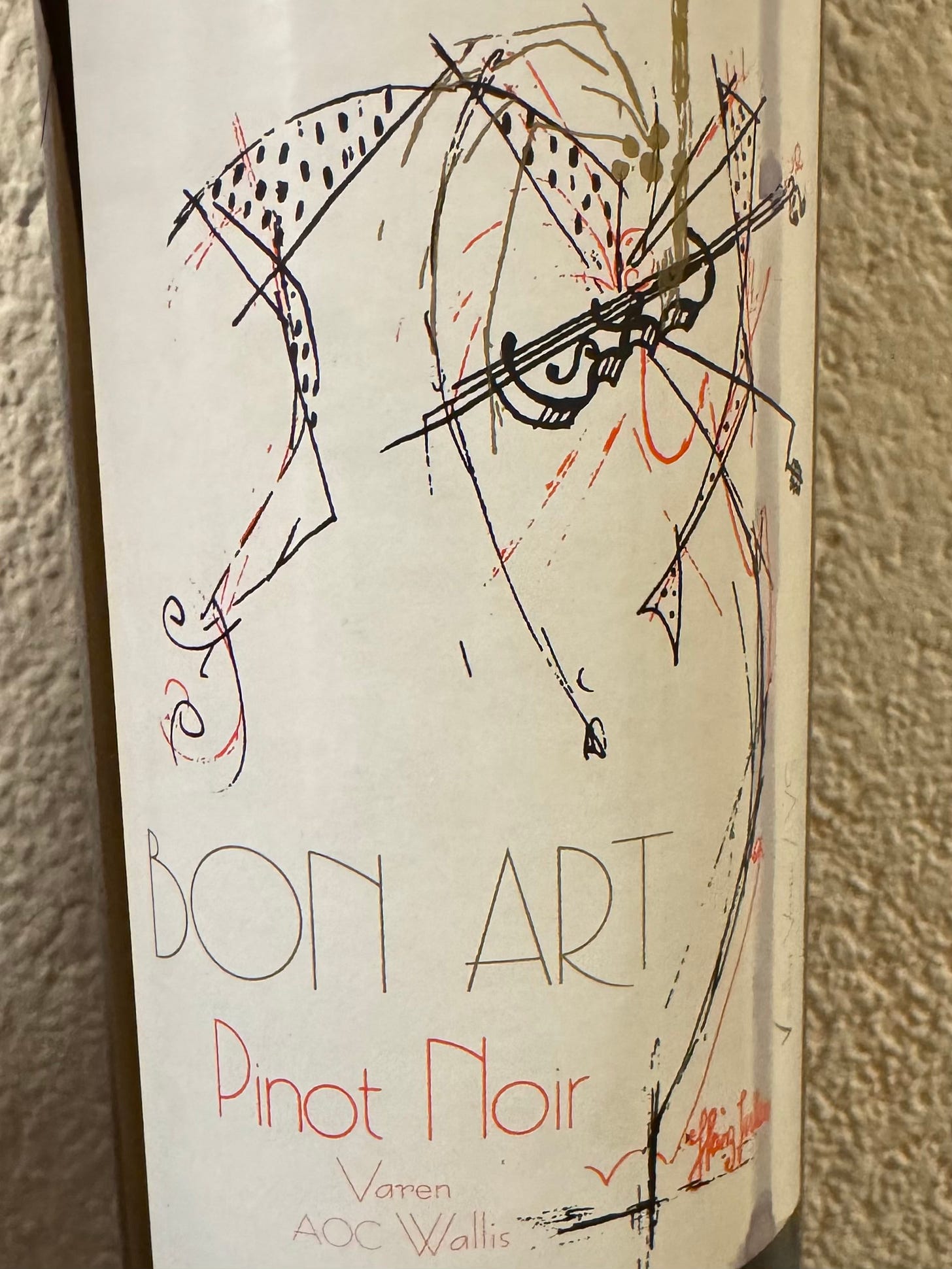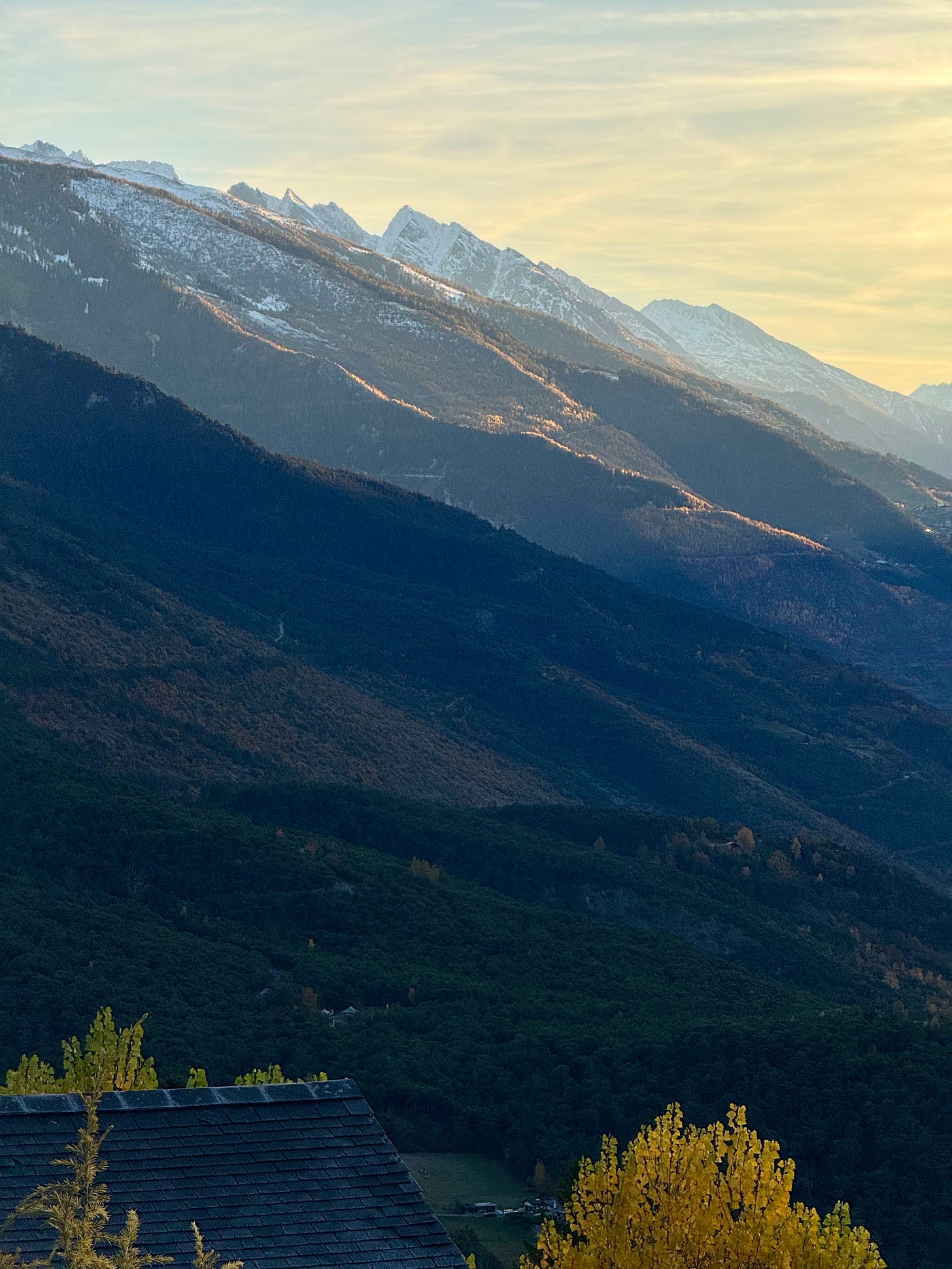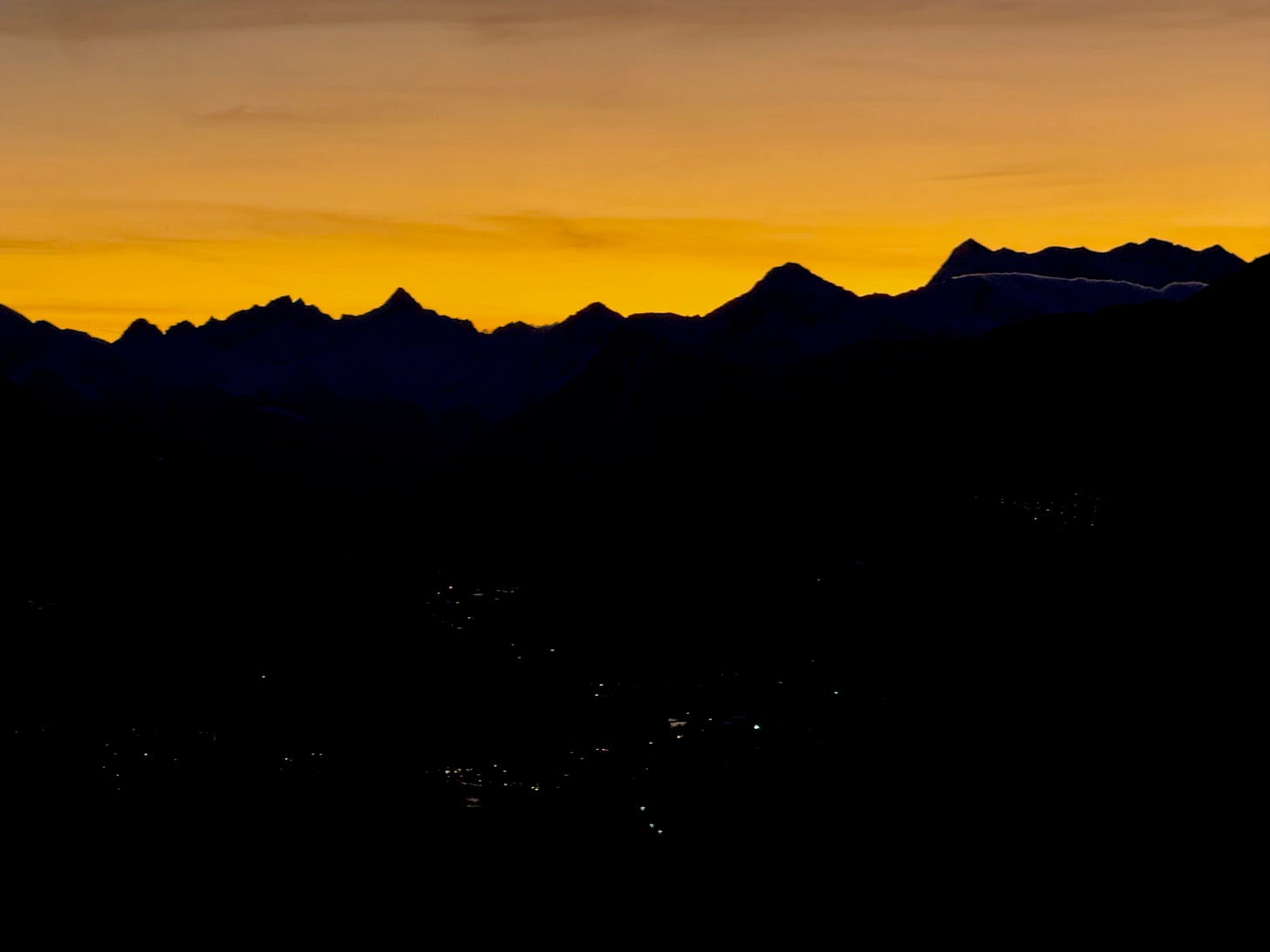Ambiguity, Cheeeese, Newbies, Pompeii, Zipped
When chaos seems to rule, check underneath for growth
When chaos runs amok
An extract from a longer work, just published, part of The jardin intime essays that I’m writing on Medium/paywalled. If you’re a paying subscriber here, contact me for a gift link to the full essay.
The kitchen is ahumming today. Lyrics from a nursery rhyme flit around in my head while visions of kings boogie in and out of the room, old kings ‘ stolen crowns in France and new kings’ lack of hats in Washington, Moscow and Jerusalem — the hats of dignity once worn by leaders. Kings in their counting houses, counting out their ballroom seats.
Kitchens are places for joy, no room for kings here, so I brush them aside. Star-shaped small blue flowers, borage, are slowly drying in the oven while tomatoes are lined up like soldiers (the kind that respect and serve the people) next to the cutting board, chicken bones have joined forces with carrots and celery and onions and garlic in a heavy pan of water for a few hours of gentle palaver. Simmering, drying, chopping, baking, sterilizing — more harvesting, of kale and apples before sundown. It’s an October gardener’s day, the kind that offers the comfortable illusion of orderliness, of life under control…
…Chaos is noisy and theatrical and intrusive: it takes centre stage and easily overwhelms whatever is happening around it. The only way past it is to look for the good that it hides, the quieter good that is always there.
A permaculture garden like mine is chaotic. To the eye of anyone who believes soldiers and plants should march in tidy rows, it looks all wrong, inefficient surely. Peppers weave through tomato vines, vividly orange nasturtium flowers are intertwined with beans and leeks, Chinese mustard spins out yellow flowers but it also has seeds on spindly stalks that spill over straggly potatoes when bumped. More mustard next year, guaranteed.

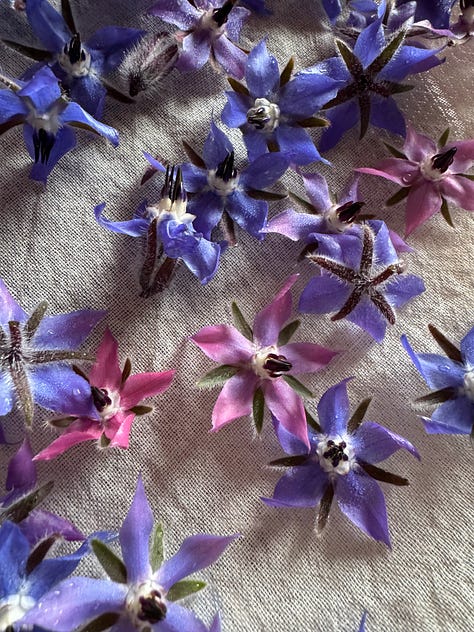

For orderly-minded people, such a garden is disconcerting unless viewed from a safe, slightly blurred distance. It’s sometimes a solace to be near-sighted. We might love the luscious massed flowers in a painting from Monet’s garden, but I when I look more closely at his densely floral art, knowing that he was myopic but also was passionate about plants, I’m sure there was a lot going on under those plants, 100 years ago…
…Gardens that sit on the wild side of orderliness offer another way to look at chaos. When the future seems unknowable and therefore unmanageable, they hand us lessons on how to develop a tolerance, an appreciation even, for ambiguity. No outcomes are certain in this garden and one small change can tip the scales (or not), what’s called the butterfly effect in Chaos Theory. And yet these gardens are beautiful and often produce well above expectations.
(continue to the complete essay, with more on living with ambiguity, on Medium)
Swiss wine tomorrow, ups and downs
There is a season for everything under heaven and in business that means growth and a decline in growth, the rise and fall of products. The wine industry is no exception. The first shudders of a drop in consumption worldwide in 2016 have given way to a confirmed picture of a steady decline.
This is the background to what we’re likely to see in coming months in the world of Swiss wine. Market loss means scrambling to face new challenges and getting creative.
Who are the newest, best, brightest?
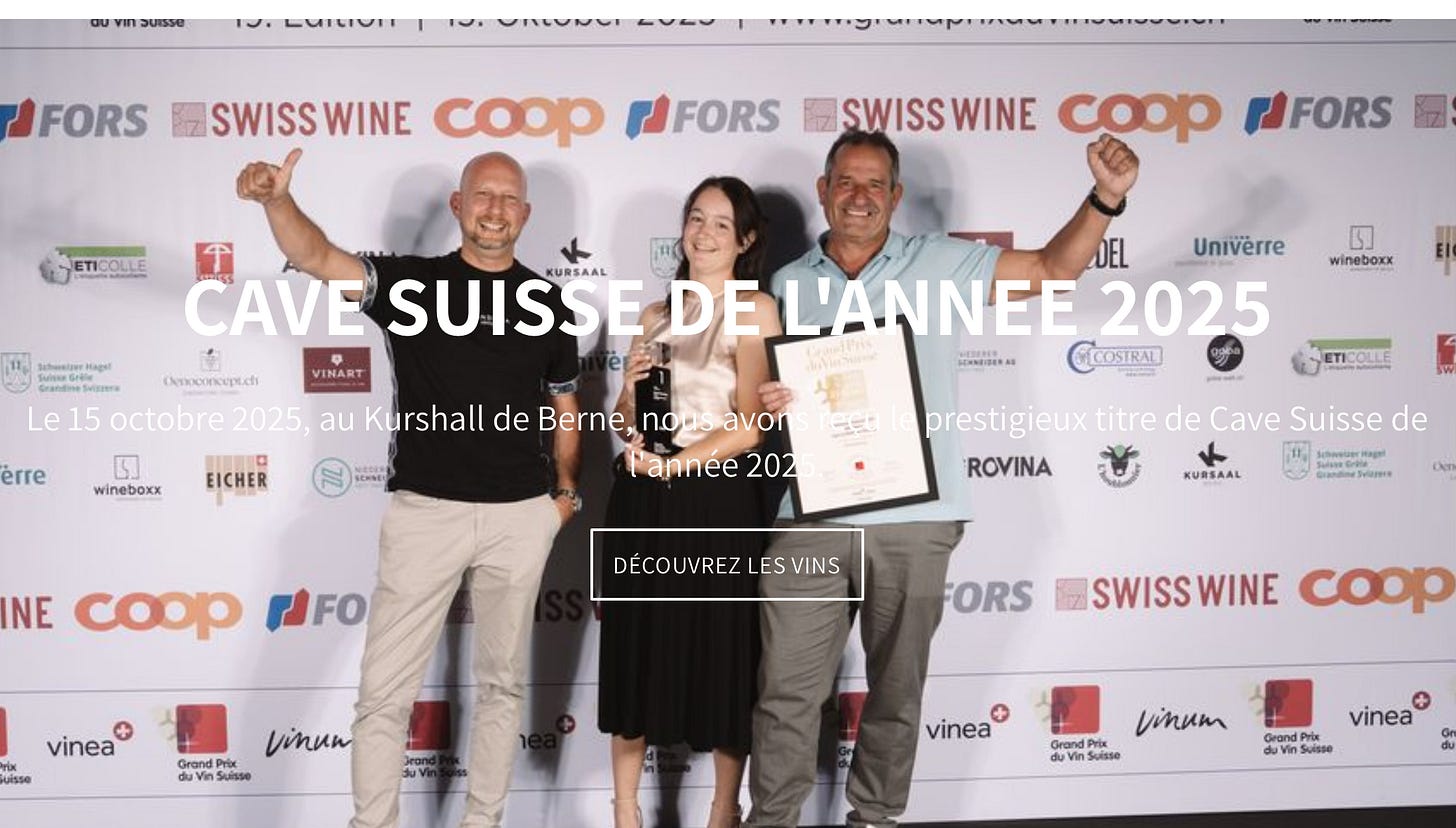
Wine producers in Switzerland face several challenges, some of which they are already managing well. A fairly stable group of reliably good family wineries was created in the 1970s-1980s, or a younger generation took over then after studying in the Changins national university wine programme. Their products gained a reputation for technical excellence and an ability to reflect the country’s many varied terroirs. In the process they made a name for Swiss wines in today’s market.
Over the past 5-10 years a new generation has taken over in these wineries. The good news is that they are well-educated, experienced thanks to their parents, they have traveled—often training in several countries and they are now showing they can produce top-quality wines. A striking development that makes this clear is the number of new faces winning cantonal and national wine awards.
I was startled to realize, when the Grand Prix du Vin Suisse awards were announced in mid-October, that while I know and have great respect for the winners of the four top awards I am unfamiliar with many of the other winning wineries in 15 categories, a first for me. The same is true for official regional awards. Given that more than 3,000 wines from around the country were entered in the GPVS, the largest number in half a decade, this tells me Swiss wine’s vital signs are strong. And for those of us who love to explore new and promising wines, let’s go! because the change underway is rapid. Most of the old familiars who made good wine still do, but if you stop there, you’re missing a lot.
Climate change, marketing, consumer habits
There is more sobering news. Deny climate change or not, it’s hard to find wine producers who don’t say they are struggling with it, from changes to what areas are now able to grow which grapes to shifting needs for new treatments. I regularly see scores of newsletters explaining how much they’re learning. The problem is that while the need for change may be pressing, change naturally comes slowly in vineyards—a vine doesn’t produce usable grapes until its third year and it takes yet longer to produce quality and quantity—so replanting is a long haul solution. Vineyards are very often rented and the contracts cover several years. These are relatively small businesses, virtually all privately owned plus some cooperatives, and it’s crucial to ensure a return on investment to stay in business.
Add to this the need to market differently from in the past, starting with web sites and newsletters, which people who work in the vines and cellars are hard pressed to find the time to maintain. And yet most of them are doing it well, educating consumers in a way that wasn’t necessary in the past. For several years wine fairs meant that a winery had a limited number of days they needed to be outside selling, but as competition steps up and the number of wine buyers falls, the number of events and smaller fairs and wines on tour have grown. There’s a need to stand out from the crowd, but there’s also a need not to stretch one’s resources too far.
Most of the educational information is in a Swiss language so forgive me for turning to the Spanish for help here. One of the best winery newsletters around is from Mas Doix in Priorat whose photos and texts about the seasons and climate change and more provide an excellent ongoing education for anyone who loves wine, especially organic, biodynamic and natural wines. If you read French, German or Italian, the best Swiss wineries want to teach you what they do.
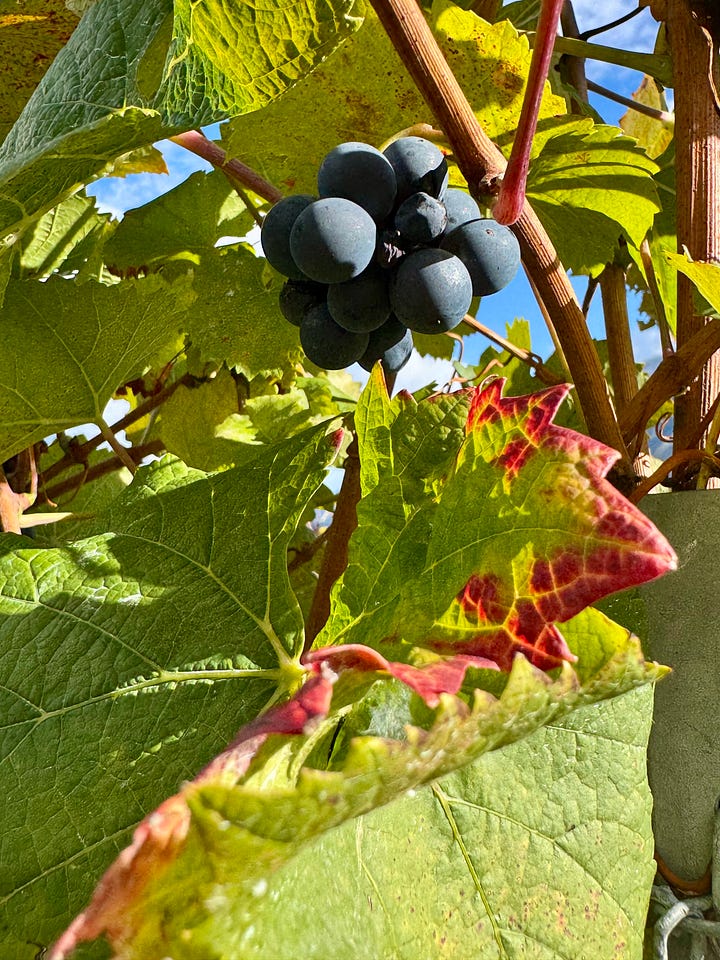
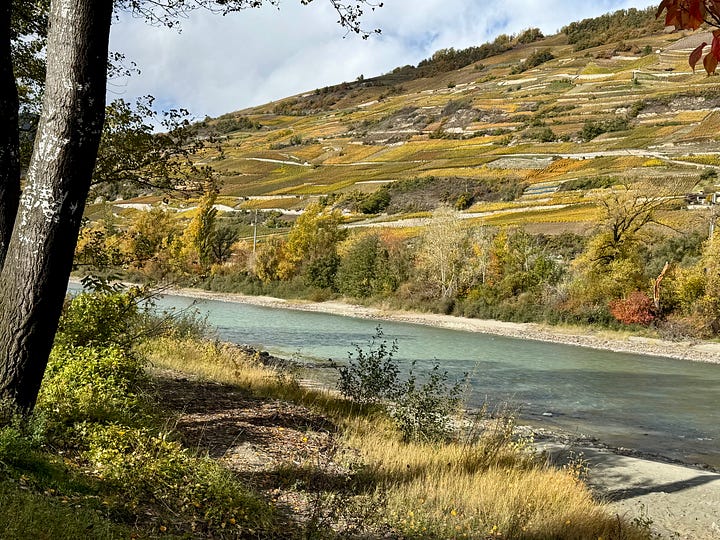

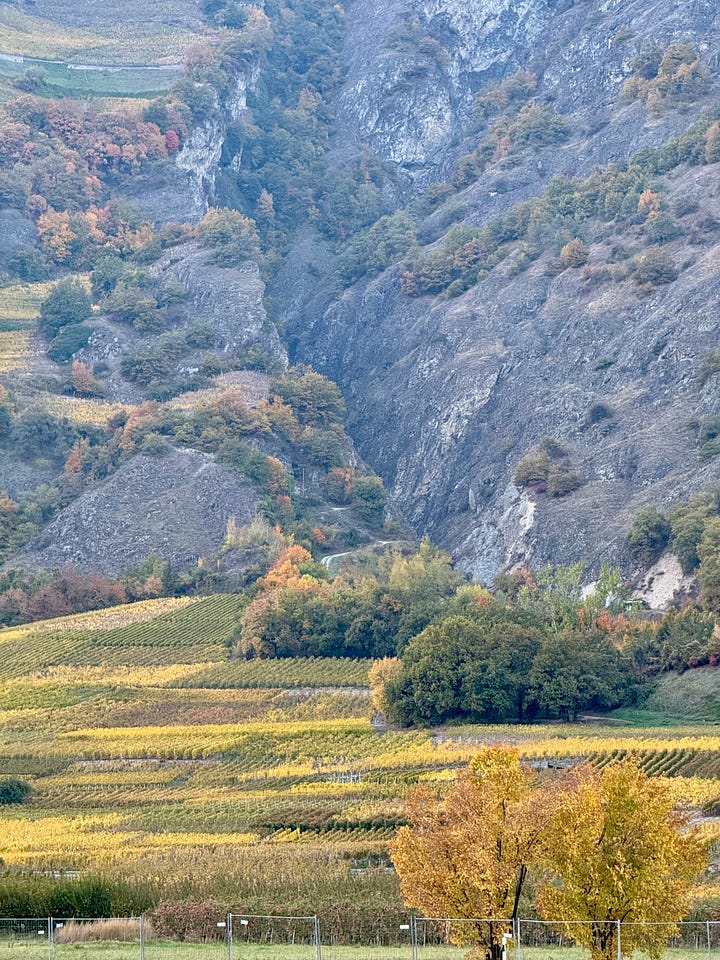
Which brings us to the shift in consumer habits. Consumption in Switzerland has been falling—down 8% in 2024, a drop that shocked—and while the worst harvest in 50 years might be seen as a blessing because there were large stocks from the excellent 2023 harvest, few winemakers see it that way. The reasons for the falloff are debated everywhere, but it’s clear that anti-alcohol groups promoting research that shows the harmful effects of alcohol has had an impact. Whether that is a pendulum swing and whether or not new research will provide more balance remains to be seen.
A younger group entering the market has been pushing for more natural and better environmental approaches to making wine. Winemakers are now providing a good range of these, but they don’t replace older wines for most cellars; they’re an additional product. This means a larger, diversified group of products because, for now, it’s not clear if this is a long-term trend or a lingering fad, and wineries can’t make these changes overnight.
Wine pick: Pinot Noir, Varen, Weine Vouilloz
Varen is not far from me in Valais, I’ve written about hiking there, and I have been a member of their Pfyfoltru wines commission more than once, but I don’t know all of the wineries. This bottle was a gift from visiting friends, a very good example of the classic Pinots for which the village is known. It’s smaller and less well known than Salgesch, just below it, a famous Swiss Pinot village. The vineyards are neighbours and it shows. Michel Vouilloz’s wine is elegant yet uncomplicated, with beautiful balance and fresh fruit, providing all the lightness and class of a good Pinot.
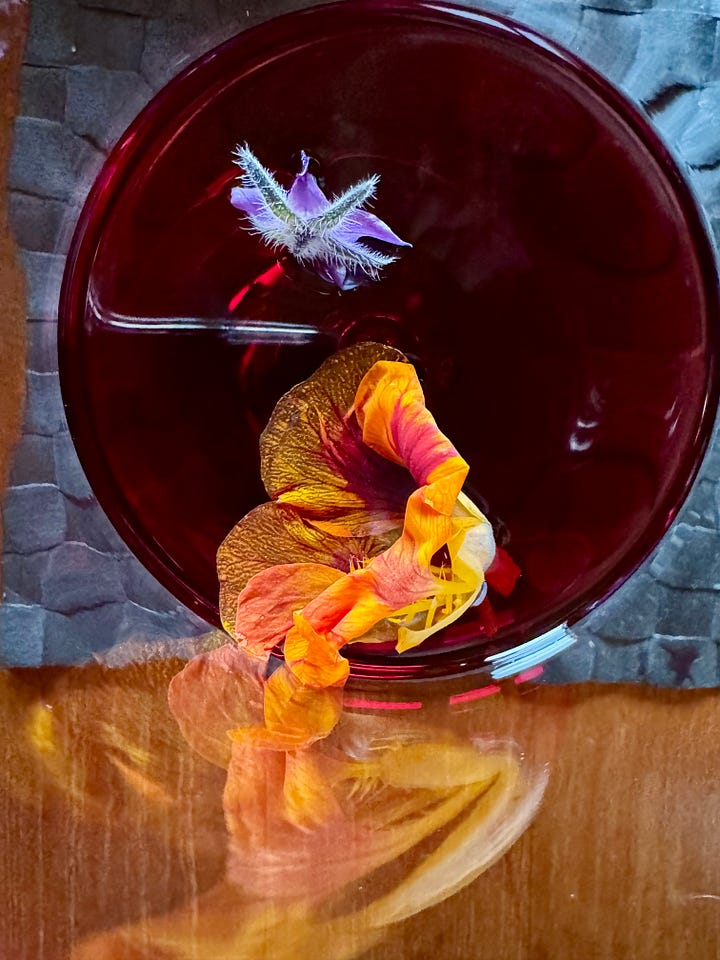
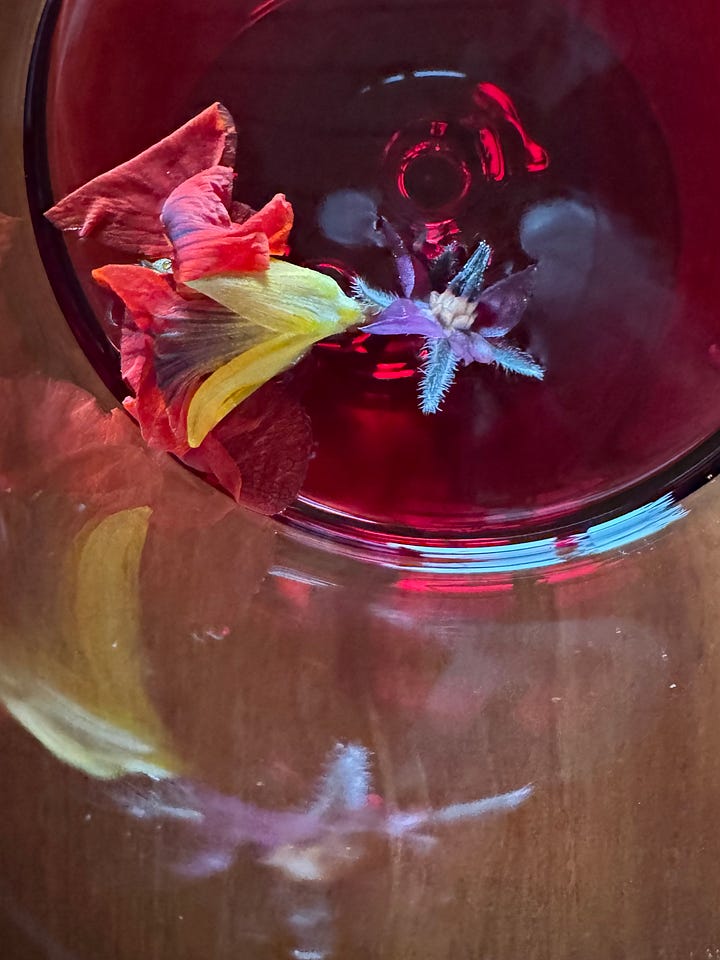
We had fun with this wine over a winter soup (cabbage, tomato, onion, lentils) lunch by serving it with frozen flowers, nasturtium and blue borage (see the Chaos story above). Unlike ice cubes they don’t melt water into your wine. They are edible and didn’t stay in the glasses long enough to have an impact on the wine. They made for some interesting photo effects, with everyone’s cameras out.
Out & about
Wine events: Expovina, major annual international expo in Zurich, 30 October-13 November. Divines, Rolle in Vaud, 7-8 November, special guests—Changin graduates who are making wine outside Switzerland. Foire aux Vins, Vevey in Vaud is a good example of the growing number of smaller fairs with an interesting mix of 20 Swiss wineries.
Gastronomy: Cheese, glorious cheese, 250 kinds from around the world competing at the world cheese awards, 12-15 November in Bern. Food writer Heddi Nieuwsma, who publishes Cuisine Helvetica, has all the reasons you should go (but if you love cheese you’re probably already buying your ticket) and all the details. Bern again: you must, at least once in your life in Switzerland, go to Bern’s historic and very lively onion market—and go very early! 24 November, Bern. ,
And for hikers: the Bisse Museum in Anzère, Valais celebrates the 20th anniversary of the Museums at Night project with a programme that includes a guided night hike along a bisse and much more, 8 November, Anzère in Valais and VS wine museum
Here & there
Two new books on Swiss wine and beer: Passeport Bières Léman is a fun concept, a mix of guidebook (in French) to breweries around Lake Geneva with a pass for 30 of them for a free tasting, valid until October 2026. Author, David Genillard, publisher Helvetic, available in Swiss bookstores.
The Smart Traveller’s Wine Guide, a series of pocket guides published by the Académie du Vin Library, has added Switzerland to Rhone, Bordeaux, Rioja, etc. It’s well-designed and attractively illustrated and co-authors Simon Hardy and Marc Checkley, who have been involved with Swiss wine for several years, write knowledgeably. Packets of useful tips make it a good gift for travellers who are new to Swiss wine; for connoisseurs, it’s light on new information and wineries that are not known names, but that’s the nature of pocket guides. Available in Swiss bookstores.
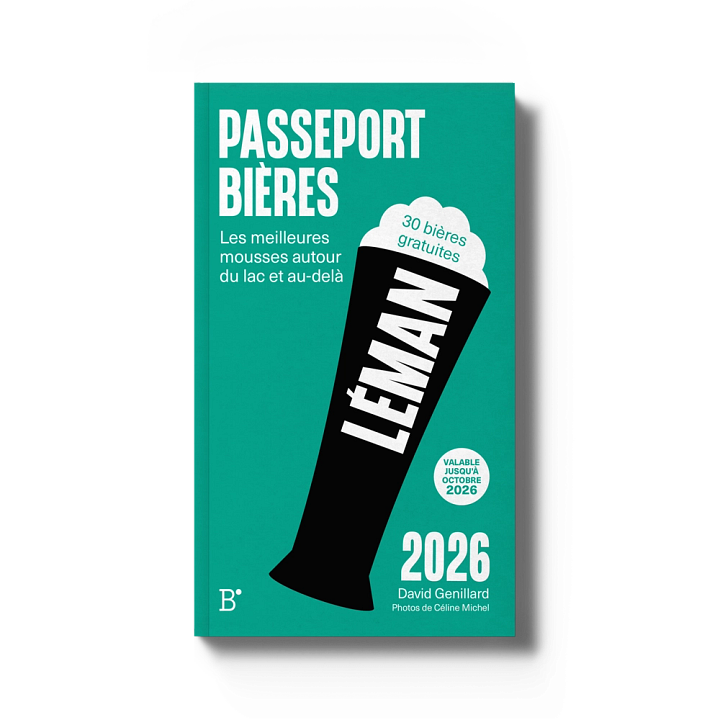
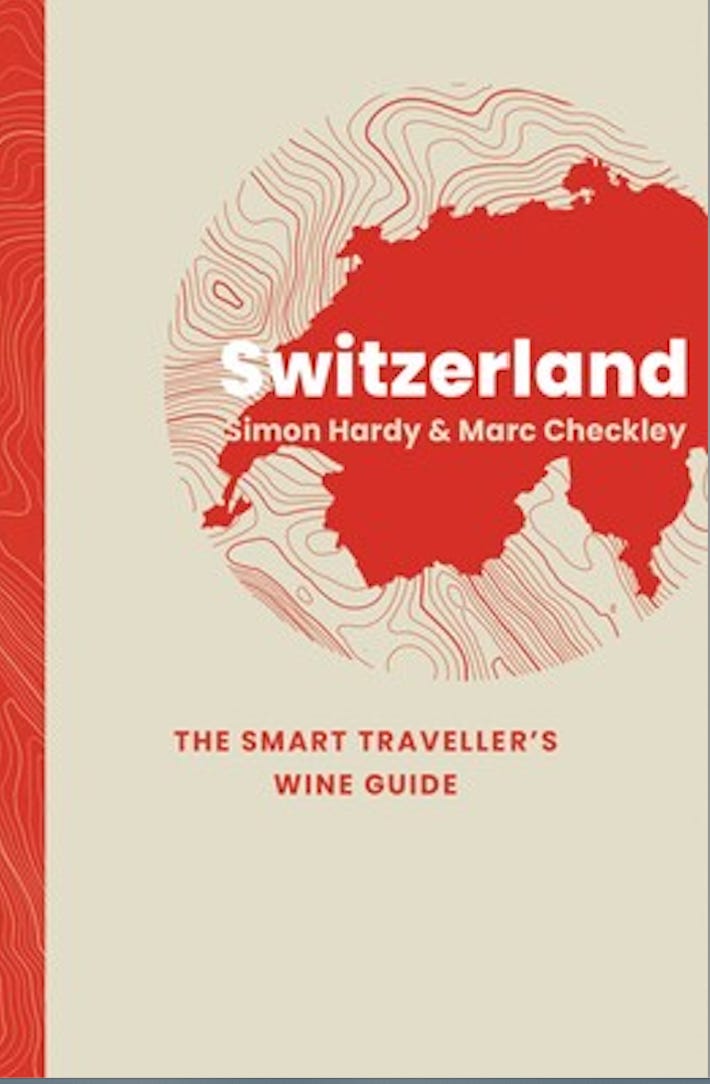
Elsewhere, online: Wine from China is finer than Western snobs imagine, The Economist (and I agree, having had some superb bottles). Hiking accidents in Switzerland double in 15 years, Jérémy Desbraux from Maison Wenger in Noirmont, Jura is Gault&Millau’s chef of the year 2026. Highest wildfire emissions in at least 23 years in Europe, Copernicus Atmosphere Monitoring service.
A 2,000 year old Pompeii garden springs back to life, Smithsonian (imagine training your nose here). The zipper is getting its first major upgrade in 100 years, Wired (No tape, Ma!)



